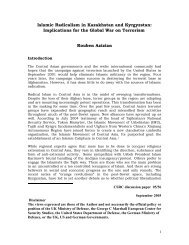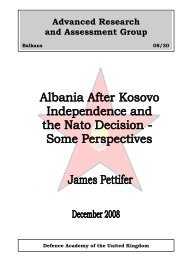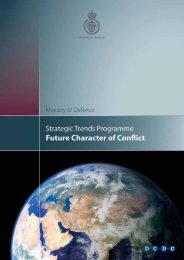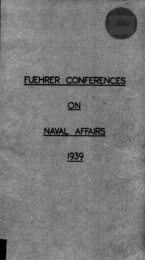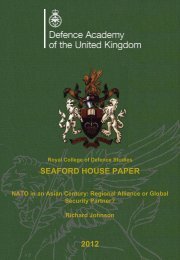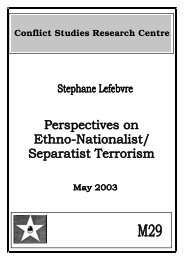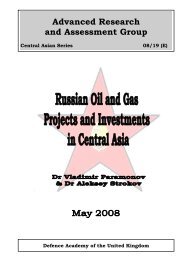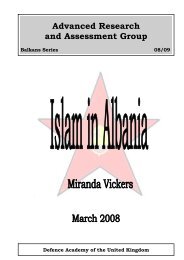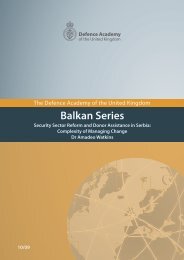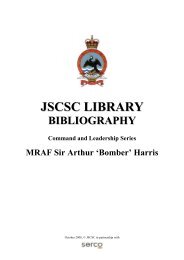Russia's European Agenda and The Baltic States - Defence ...
Russia's European Agenda and The Baltic States - Defence ...
Russia's European Agenda and The Baltic States - Defence ...
Create successful ePaper yourself
Turn your PDF publications into a flip-book with our unique Google optimized e-Paper software.
RUSSIA’S EUROPEAN AGENDA AND THE BALTIC STATES<br />
Aims <strong>and</strong> Objectives<br />
<strong>The</strong> place <strong>and</strong> the role of the <strong>Baltic</strong> <strong>States</strong> in the region <strong>and</strong> in Europe cannot be<br />
assessed without taking into account the context of their relations with Russia.<br />
This paper analyses Russia’s approach towards <strong>European</strong> security architecture <strong>and</strong><br />
establishes how the <strong>Baltic</strong> <strong>States</strong> are seen in this framework.<br />
This study seeks to achieve two key aims:<br />
• <strong>The</strong> primary aim is to provide an analysis of Russia’s <strong>European</strong> agenda in<br />
general, <strong>and</strong> her agenda in the <strong>Baltic</strong> region in particular.<br />
• <strong>The</strong> secondary aim is to define threats <strong>and</strong> challenges, as well as prospects, in<br />
Russo-<strong>Baltic</strong> relations.<br />
<strong>The</strong> attainment of these aims should provide <strong>Baltic</strong> foreign policy makers with new<br />
perspectives on the dynamics of Russo-<strong>Baltic</strong> relations.<br />
Seeking to facilitate the achievement of these aims the following objectives are set:<br />
• First, to examine Russia’s <strong>European</strong> policy in the context of global<br />
developments <strong>and</strong> their interplay, including post-9/11 security environment<br />
<strong>and</strong> the dual enlargement of NATO <strong>and</strong> the EU;<br />
• Second, to define the peculiarities of asymmetric relationship between Russia,<br />
as a great power, <strong>and</strong> the <strong>Baltic</strong> countries, as small states, in relation to the<br />
Knudsen model;<br />
• Third, to assess to what extent Russia’s foreign policy trends vis-à-vis her<br />
‘near abroad’ manifest themselves in Russo-<strong>Baltic</strong> interaction;<br />
• Fourth, to analyse the role of international institutions <strong>and</strong> cooperation<br />
frameworks in mitigating relations between Russia <strong>and</strong> the <strong>Baltic</strong> <strong>States</strong> <strong>and</strong><br />
in the changing security regime in the <strong>Baltic</strong> Sea region;<br />
• Fifth, to provide future perspectives for the <strong>Baltic</strong> <strong>States</strong> in countering Russiarelated<br />
threats <strong>and</strong> shaping their cooperative relations with Russia.<br />
Research Methodology<br />
Basic approaches<br />
<strong>The</strong> basic approach of this study is that the reasoning behind foreign <strong>and</strong> security<br />
policies in Russia <strong>and</strong> the <strong>Baltic</strong> <strong>States</strong> is based on two factors - the external<br />
environment <strong>and</strong> patterns of domestic decision making. Any state exercises its<br />
foreign policy within the context of the international system. By defining the starting<br />
point of this study with Russia <strong>and</strong> the <strong>Baltic</strong> <strong>States</strong> as reference points, two key<br />
questions need to be answered: what is the present international system like, <strong>and</strong><br />
9



